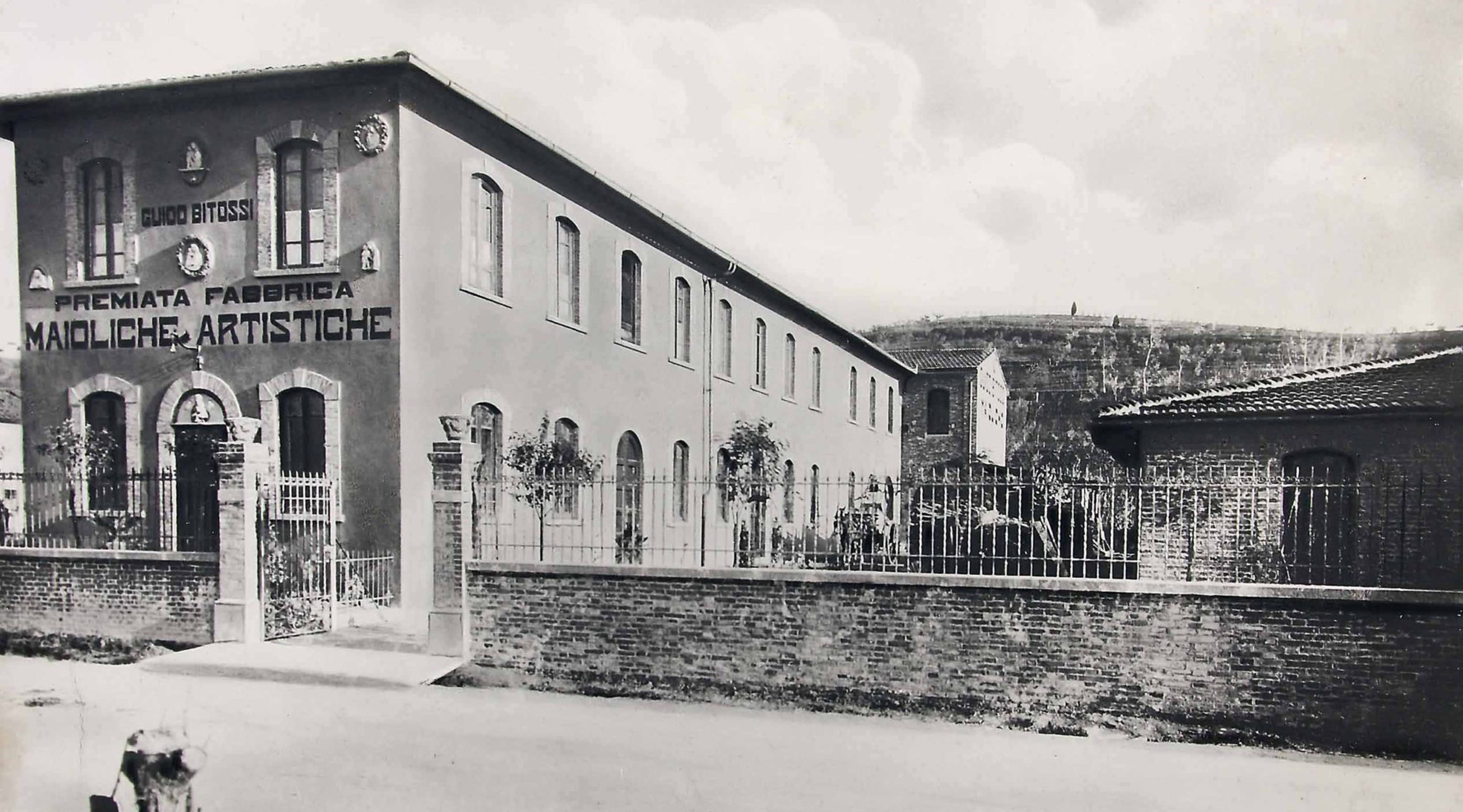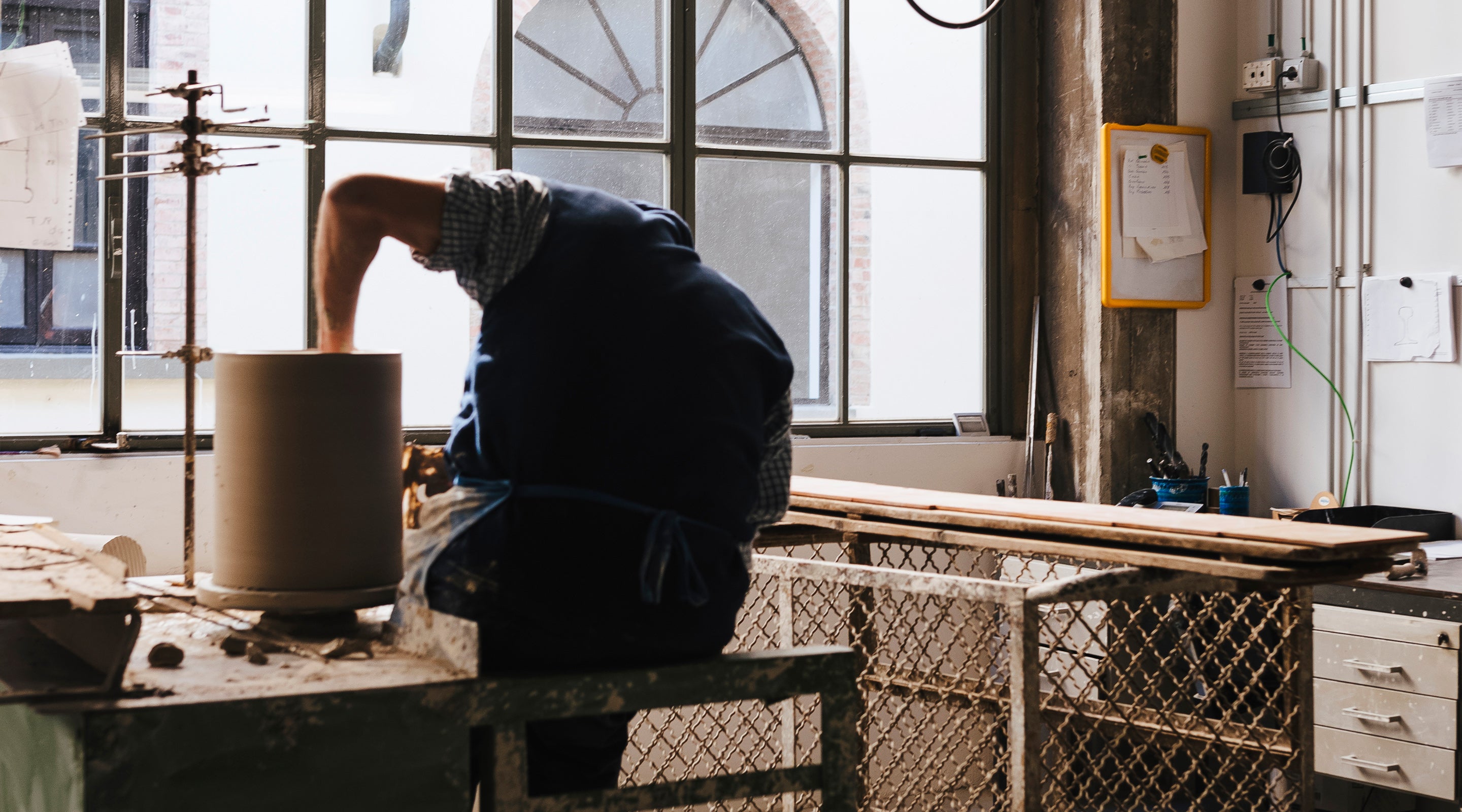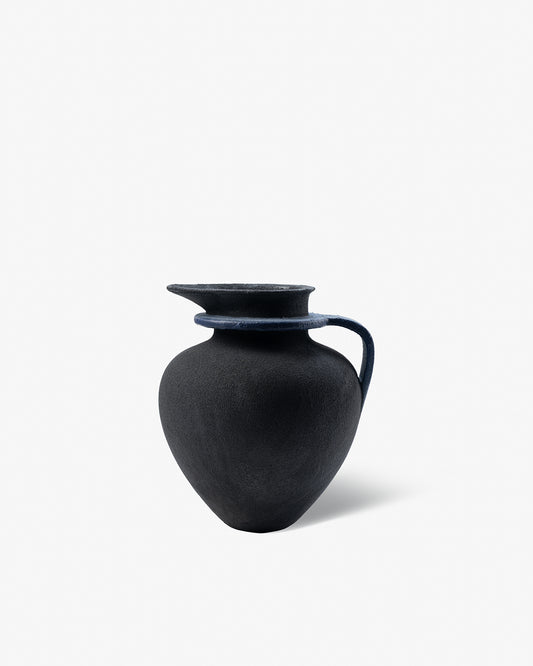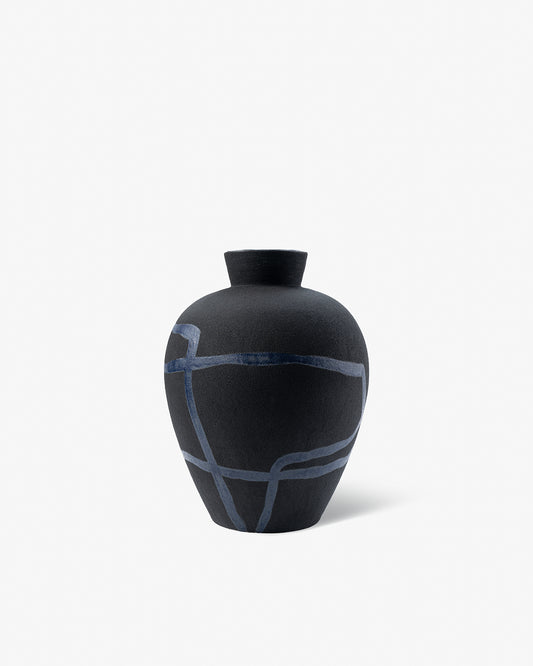A Contemporary Tradition
The story of Bitossi Ceramiche originates in the heart of Tuscany, just a few kilometers from Florence, in Montelupo Fiorentino, along the banks of the Arno River, where the culture of ceramics has shaped the lives and work of people for centuries.

In 1921, Guido Bitossi founded the Manifattura Maioliche Artistiche Guido Bitossi, merging tradition with the new stylistic expressions of the time. From the very beginning, the production stood out for its attention to detail, the study of form, and a refined interpretation of classical styles.
In the 1950s, under the artistic direction of Aldo Londi, Bitossi inaugurated a new creative season, oriented towards research and innovation. He introduced a modern and experimental language, attentive to changing tastes and the uniqueness of each product.
In this stimulating context, under Londi's guidance, Ettore Sottsass began his collaboration with the company in 1955, blending design approaches with artisanal know-how, in a dialogue that confirmed ceramics as a poetic and expressive medium within everyday spaces. This encounter marked a turning point for Bitossi and for mid-century design.
Bitossi Ceramiche is recognized as one of Italy’s historic companies, celebrated for its craftsmanship, design language, and formal refinement, capable of interpreting the present and projecting itself into the future with coherence and intuition. Each creation, entirely handmade by specialized artisans, is the result of technical excellence, material research, and aesthetic sensitivity. It expresses a knowledge rooted in tradition, yet always directed towards innovation.
The continuity of place thus translates into a constant identity: loyalty to founding principles such as craftsmanship, quality, research, and respect for manual skills. Today, the company is led by Ginevra Bocini Bitossi, the fourth generation of the family, and continues to work within the same walls with international designers, with the care and pride of a century ago.
Bitossi draws its strength from a living heritage, allowing it to continuously regenerate while remaining deeply faithful to its identity. A wealth of expertise that is carefully preserved and transformed into authentic value, becoming the driving force behind a creative tension perpetually projected towards tomorrow.
Craftsmanship
Every ceramic artwork by Bitossi is the result of a highly complex artisanal process, both in form and decoration, carried out within the factory by highly skilled craftspeople.
Quality control takes place throughout all production phases, from prototyping to modeling, from shaping to drying, and through the various firings. This meticulous process, performed with care and passion adds value to these iconic creations of Italian creativity.













